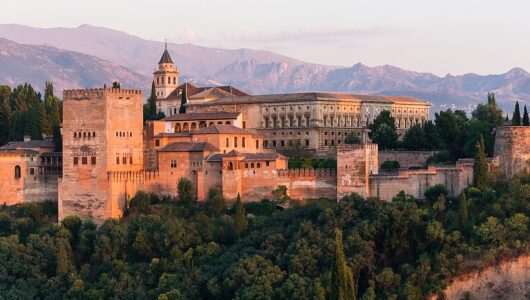FUPC will be hosting the second Light on the Hill concert on March 30th. “An Evening of Spanish Music” will include seven pieces of Spanish music with Pedro Rubio and Ana Benavides. One of the pieces, “Adiós a la Alhambra” by Jesús de Monasterio, is an example of the alhambrismo movement of the 19th century.
This movement was part of the romantic movement, but it was unusual in that it had overtones of Arabic style. How is this Middle Eastern style connected with Spain?
The Alhambra is a palace and also a fortress in Granada, Andalusia, Spain. It is one of the best preserved examples of classical Islamic architecture. What is it doing in Spain? Spain as we know it didn’t come together until the 18th century. Under Ferdinand of Aragon and Isabella of Castile, two of the ancient kingdoms that now make up Spain were united, but the southern part of what is now Spain was under the control of a Caliph based in Northern Africa.
Islamic control of southern Spain continued from the 13th century to 1492, when Queen Isabella’s armies gained control.
Alhambrismo
By the 19th century, Spain was united as a modern country and the influence of North African caliphs was a romantic memory. The Alhambra was rediscovered by Europeans (it had fallen into disrepair and was occupied by squatters for a time) and the Moorish style became trendy in music, literature, and dance.
Jesús de Monasterio y Agüeros was one of the composers who worked in this style, and “Adiós a la Alhambra” is one of his best-loved pieces. He was a violinist and originally composed the piece for violin and piano. Rubio and Benavides will present it with clarinet and piano.
The Alhambra is now a UNESCO World Heritage Site.
Image by Jebulon under Creative Commons


